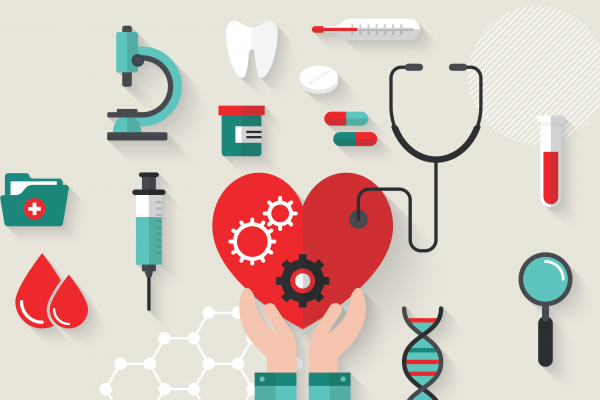Post Traumatic Stress Disorder, commonly known as PTSD, comes in many forms and affects children and adults alike. Early descriptions of PTSD are found throughout literature. The hallmarks of war-related PTSD were described in Homer’s The Iliad. Shakespeare wrote of the symptoms in Henry IV and A Midsummer Night’s Dream. In recent times, books such as The Things They Carried (Tim O’Brien) describe the effects of war and the risk for PTSD-related suicide. Movies such as Ordinary People and Mystic River portray the effects that loss and abuse have on families and individuals. The daily ease of access to images on the internet and television puts the fodder for PTSD in front of all exposed to electronic media. We have only to listen to the news to learn of all the possible inputs that can cause PTSD—the tornado that sweeps through a Midwest town, atrocities happening to people in places such as Syria, beheadings, and stories of abused children. PTSD can affect one individual at a time, or a lone event can bring PTSD into the lives of many with a single swath.
Prevalence of PTSD in the U.S.
PTSD is common. The lifetime prevalence of PTSD among adult Americans is 6.8 percent (National Comorbidity Survey Replication). For adolescents, the six month prevalence was estimated to be at 3.7 percent for boys and 6.3 percent for girls (Kirkpatrick, 2003). The prevalence is much higher among Veterans. Men and women who had served in the Vietnam War have a lifetime prevalence of 30.9 percent and 26.9 percent, respectively. Studies of Gulf War Veterans reported a current prevalence of 12.1 percent, and 13.8 percent for Veterans of Operation Enduring Freedom/Operation Iraqi Freedom (Kang, et al 2003; RAND Corporation 2008). Unfortunately, PTSD is often underdiagnosed in the medical setting—with symptoms being attributed to a “normal” response to a trauma, misdiagnosed as depression, or altogether missed because of the physical presentation of the condition.
PTSD Symptoms and Impacts
PTSD symptoms are not limited to only the emotional, but also bring physical impairment in many forms. The condition affects those people supporting the individual with PTSD, often causing distress to family, friends, and colleagues. It is important not to approach PTSD with a single point of view — the victim of a natural disaster may have different experiences and risk factors than a combat veteran, for example. What is the same, however, is a set of symptoms based in some form of exposure to a traumatic event, resulting in significant distress and impairment in an individual’s ability to perform in her or his roles, whether within family, employment, or other social units.
No matter the cause, the response to a traumatic event is similar, whether described in the 8th Century BC, or in 2016. In 2013, the American Psychological Association updated the criteria used to diagnose PTSD. According to current diagnostic criteria, the diagnosis of and symptoms attributable to PTSD must include at least one month of:
- Direct exposure to a stressor; witnessing the stressor in person; indirectly learning of a loved one exposed to a violent or accidental circumstance; and/or repeated or extreme indirect exposure to aversive details of the event, typically by a professional exposed to the stressor (e.g. first responders)
- Persistent and intrusive re-experience of the event through memories, nightmares, flashbacks (e.g. dissociative reactions), distress after exposure to a reminder of the stressor, and physiological reactivity after exposure to a trauma-related stimuli (e.g. jumping up after hearing a door bang unexpectedly)
- Avoidance of distressing trauma-related stimuli, including thoughts or feelings, and/or trauma-related external reminders such as situations or people
- A negative effect on thoughts and mood, including an inability to recall features of the trauma; persistent negative beliefs; persistent and distorted self-blame and/or blaming others; persistent negative emotions such as fear or anger; diminished interest or pleasure in activities; feeling detached or estranged from others; and having a persistent inability to experience positive emotions
- Alterations in physiological arousal or reactivity including irritable or aggressive behavior; self-destructive or reckless behavior; hypervigilence; exaggerated startle response, problems in concentration, and/or sleep disturbance
- Distress or functional impairment in relationships, social, and occupational roles
What PTSD Feels Like
PTSD doesn’t always occur immediately after the traumatic event. In fact, in some cases, the diagnosis may not be made for up to six months with the gradual onset of the full symptoms. Some individuals with PTSD develop dissociative symptoms as the primary feature of the condition. Those affected describe a sense of being an outside observer or detached from oneself (depersonalization), and/or the sense that things are not real or are distorted (derealization). See the American Psychiatric Association’s Diagnostic and Statistical Manual of Mental Disorders, Fifth Edition for a detailed description of the diagnostic criteria for PTSD.
Unfortunately, PTSD predisposes affected individuals to other behaviors that can be emotionally and physically harmful. Persons with PTSD are more likely than persons without PTSD to develop alcohol use disorder (AUD) and substance use disorder, including tobacco, pain medications, and illicit drugs. Nearly half of people with PTSD can suffer co-occurring depression. Physical symptoms and conditions associated with PTSD include cardiovascular conditions such as hypertension, pain, gastrointestinal symptoms, and musculoskeletal symptoms.
While it is very difficult to predict who will develop PTSD, some factors may increase the risk of developing the symptoms, including:
- Getting physically hurt during the trauma
- Seeing another person get hurt or killed
- Having childhood trauma
- Having a sense of horror or helplessness during the trauma
- Having little or no social support after the event
- Dealing with additional stressors after the event, such as losing a loved one, ongoing pain or injury, or loss of one’s job or home.
Taking Care of Oneself after Trauma
While trauma impacts everyone differently, there are some ways to reduce the risk of developing PTSD. Examples include:
- Seeking out support from other people, including friends and family
- Talking about the trauma soon after it occurs
- Attending a support group with others who may have had similar experiences
- Learning how to acknowledge and accept your actions in the face of the trauma
- Having a positive coping strategy; being able to act and respond effectively despite feeling fear
PTSD does not have a cure, but symptoms can be managed to help an individual function better in day to day life. The recommended treatment of PTSD largely is based on the use of medication and psychotherapy. The earlier treatment is started, the more likely the treatment will have positive effects. Combinations of medication, psychotherapy and support are typically the most effective way to ameliorate symptoms.
Therapy for PTSD
Several therapy types have been shown to reduce the physiologic responses to stimuli, or alleviate intrusive thoughts by teaching a person the skills to identify triggers in order to better manage their symptoms.
- Cognitive behavioral therapy has been shown to be effective in treating PTSD. In addition to educating people of their symptoms, cognitive behavioral therapy can also include prolonged exposure (PE) therapy to address the traumatic event. During PE one gradually approaches trauma-related memories, feelings, and situations that have been avoided since the trauma. By confronting these challenges, PTSD symptoms decrease.
- Novel treatments for PTSD include Eye Movement Desensitization and Reprocessing (EMDR). This is a form of psychotherapy that involves the patient paying attention to a back-and-forth movement or sound while thinking about the upsetting memory long enough for it to become less distressing. During EMDR, one learns about their physical and emotional reactions to trauma, targeting the upsetting memory, discussing the memory, and ultimately focusing on a positive belief or feeling while the memory is in one’s mind.
- Cognitive restructuring or processing therapy helps the affected person work through faulty memories of the trauma, and challenges their interpretations of the event, experience of the event, and beliefs that life is full of ongoing danger. Cognitive processing therapy teaches new ways to handle upsetting thoughts and to develop a new perspective on both past and future.
Other therapies include training in relaxation and anger-control skills, group therapy, couples therapy, family therapy, implementing an exercise program, and sleep hygiene. While often tempting in the short-term, it is essential to avoid self-medication with alcohol or other substances such as pain killers that often are habit forming, and may exacerbate symptoms.
When approaching our programs, we at Magellan recognize the importance of identifying PTSD symptoms early on. We hope to spread the understanding that one’s response to trauma does not reflect failure, or weakness in character. Rather, we believe that raising awareness and understanding of PTSD is essential to tackling this condition, which affects so many Americans. As we move forward in developing and integrating new programs, we are keenly interested in supporting individuals, families and healthcare providers to increase access to resources for PTSD education, treatment and support.
Looking for more information on PTSD support? Click here for a list of resources and tips, or call 1-800-273-TALK if you are in crisis.





